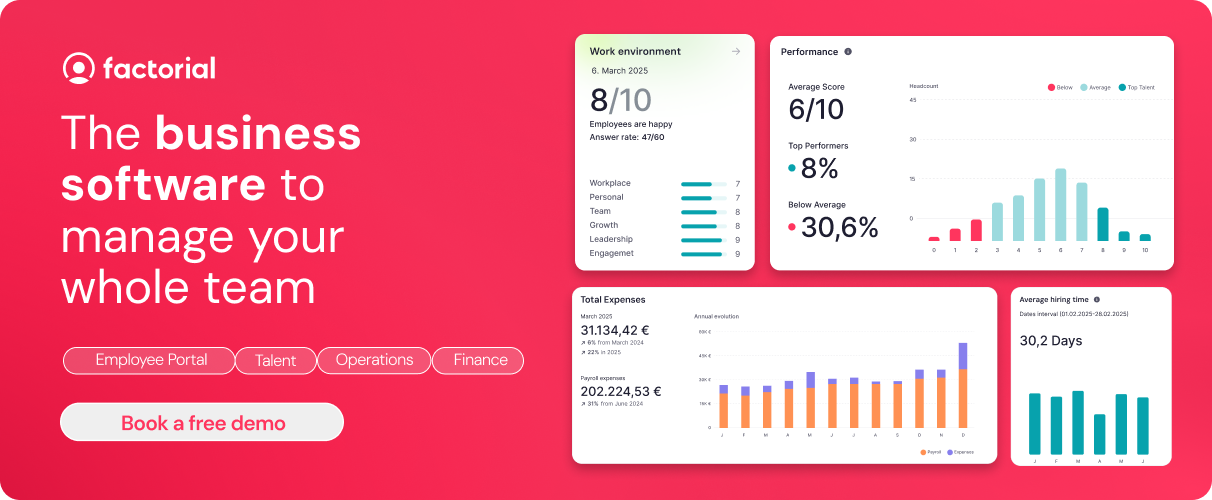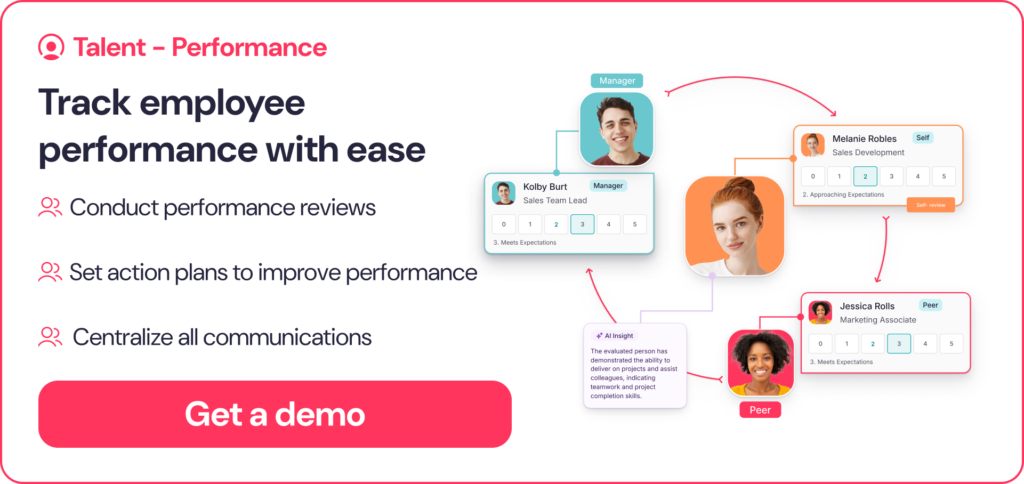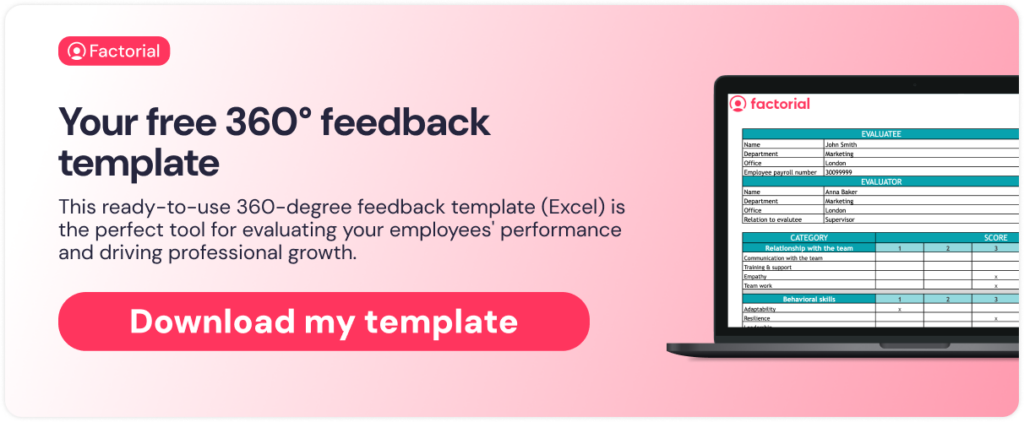A pay for performance compensation model is a popular method used by HR departments where you encourage your employees to hit their performance goals by offering them a monetary incentive. This might be in the form of merit pay increases or variable pay programs.
Pay for performance can be a great tool for increasing employee productivity, however, it might not always lead to positive workplace culture. A recent survey suggests that 77% of companies in the U.S. are now using them as part of their employee recognition schemes, but do these plans really work for everyone?
In today’s post, we are going to take a look at how they work to help you find the right model for your business. We’ll compare the pros and cons of using pay for performance, and we’ll discuss whether this compensation method can really help you motivate your employees.
Streamline your workflow with our Business Management Software.👇

Pay for Performance Definition: What is It?
Pay for performance is a compensation model used as part of a wider continuous performance management initiative. It is also referred to as performance based pay, p4p, and pay for performance compensation.
What does this mean?
The basic idea is that you pay employees based on how well they perform their duties. You do this by setting performance goals for each employee and paying them a bonus when they reach or exceed their objectives. This might be in the form of merit pay, or one of a variety of variable pay programs.
Some view the pay for performance model as a fairer approach to employee salaries. With a more traditional compensation method, all employees at the same level are paid the same amount, regardless of whether they under or over-perform. There’s no real financial incentive to try harder. In contrast, with a pay for performance program, you motivate your employees to perform to the best of their abilities and strive for continuous improvement by offering them tangible rewards. Many argue that it can encourage engagement and boost top talent retention.
How Does Pay for Performance Work?
We’ve looked at a basic performance-based compensation meaning. Now let’s discuss how it works.
The pay for performance model and processes you implement will depend on a range of factors. To work out which model works best for you, you need to consider your organization’s budget, compensation philosophy, and organizational goals.
What are you hoping to achieve? How often will you reward employees? Do you have an established budget? Which performance-based pay plans would work best in your organization?
Ultimately, the way pay for performance works will depend on your employee performance management system, how you conduct your appraisals, and the employee performance metrics you use to track progress. Do you use a specific assessment model such as the 9 box grid? How do you calculate performance-based pay and conduct performance reviews for remote employees?
The best way to make sure you collect all the important information during your employee performance reviews is to design a template. This can take time to develop and get right. The questions you ask need to be well thought out, well-executed, and tailored to your organization. This will help you ask the right questions, evaluate the full spectrum of performance, and align it with your pay for performance programs.
If you don’t already have one, you can download and adapt Factorial’s 360 performance appraisal template.
Types of Pay for Performance Models
As we mentioned above, there are two primary types of pay for performance programs: merit and variable. You can choose one method or implement both to boost performance and motivate your employees.
Merit Pay
The first pay for performance model is merit pay. This is where you increase the base salary of an employee as a result of high performance. If an employee hits their goals or exceeds expectations, you reward them by raising their salary at their next salary review meeting.
This is the most common pay for performance model. Raises are usually implemented on an annual basis and are included in a company’s budget. They are also permanent, so employers usually look for signs of consistent high-performance before rewarding an employee with a merit-based salary increase.
The benefit of merit pay is that it allows you to differentiate and account for individual performance within your teams. The downside is that as salaries are usually only reviewed once a year, a high-performing employee might be tempted by a higher salary elsewhere before you have the chance to reward them for performing consistently well.
Variable Pay
The other type of pay-for-performance model is variable pay. This model includes a range of bonus types that vary according to payout period, eligibility, and employee metrics. They are usually tied into your employee recognition programs and, unlike merit pay, they are not dependent on annual salary reviews.
Bonus types include:
- Discretionary bonuses: Awarded on an ad-hoc basis to employees demonstrating outstanding performance. You wouldn’t usually tie these to specific pre-defined goals. Examples include spot bonuses (where employees are rewarded “on the spot” for achievements that deserve special recognition), project bonuses (where employees are rewarded for successful completion of a project), and retention bonuses (usually awarded to long-tenured employees to encourage retention).
- Non-discretionary bonuses: Awarded when employees meet specific, pre-defined goals and objectives. Non-discretionary bonuses can take the form of short-term incentives (STI) or long-term incentives (LTI). Examples include company-wide bonuses (based on specific improvement goals for the company), team-incentive bonuses (based on team performance/achievements), and individual incentive bonuses (based on predetermined, measurable business objectives).
Pay for Performance Pros and Cons
Performance-based programs can be a great tool for helping you meet your business goals. However, they might not work for everyone, and they are not without their disadvantages, especially if you don’t take the time to design a strategy based on clear guidelines and processes.
Let’s take a look at some of the specific pros and cons to help you decide if the program could be a good fit for your organization.
Advantages
- Boosts motivation and morale
- Increases productivity
- Helps you nurture a high performance culture
- Clarifies the process of setting achievable goals
- Helps create a strong bond between employee and employer
- Plays a part in creating a healthy performance-based culture
- Establishes company values
- Offers employees more control
- Enables you to attract and retain top talent
- Finally, it can lower costs and help businesses to remain profitable
Disadvantages
- Firstly, it may have a negative effect on teamwork if employees feel they are competing with each other
- Secondly, it can distract from team objectives if employees are more focused on their own skills or productivity.
- If you don’t manage it well, it can result in too much focus on quantity of work, rather than quality. This, in turn, can lead to employee stress
- Moreover, you risk putting too much focus on objective skills that can be measured by quantifiable metrics. This can result in less focus on subjective but equally valuable skills, such as communication and creativity
- An established performance-based compensation plan can be difficult to change or update. It can also be difficult to end if the program is not giving you the results you expected. This can lead to increased turnover if employees feel cheated out of previously offered bonuses
- Finally, if you don’t ensure your managers apply your pay for performance strategy consistently, it can lead to favoritism. It can also highlight potential deficiencies. For example, certain employees might not meet expectations because they do not have sufficient training
If you want to learn more about pay for performance models, check out this video on our YouTube channel:
Does Pay for Performance Really Motivate Employees?
We’ve looked at the pros and cons of performance-based pay. Ultimately, though, it comes down to one thing: do pay for performance programs really motivate employees?
Studies suggest that aligning compensation with performance can be a highly effective strategy if you do it well. In fact, organizations that embrace pay-for-performance philosophy are 50% more likely to have excellent employee engagement. Not just because of the financial incentive, but also because your employees feel that you value and support their professional development. And this, in turn, improves retention rates and helps you attract top talent to your company.
Firstly, the strategy you use should enable your employees to see a clear connection between the work they do every day and the success of the company as a whole. You need to establish clear guidelines for your program and offer rewards that represent a true incentive. You also need to make sure you implement the program consistently and your managers use the same metrics to calculate payouts across teams.
Related: How to Measure Employee Performance Metrics (with template)
Finally, you need to make sure you align your performance compensation model with your performance appraisals and your L&D strategy. It needs to form an integral part of your corporate culture. Your employees need to feel that continuous learning and development is a core value of your business. By offering continuous training and learning opportunities, you genuinely reward employees with personal, professional, and financial growth. To conclude, if the pay for performance models are matched with a company-wide growth mentality, the more you will engage and motivate your employees.





